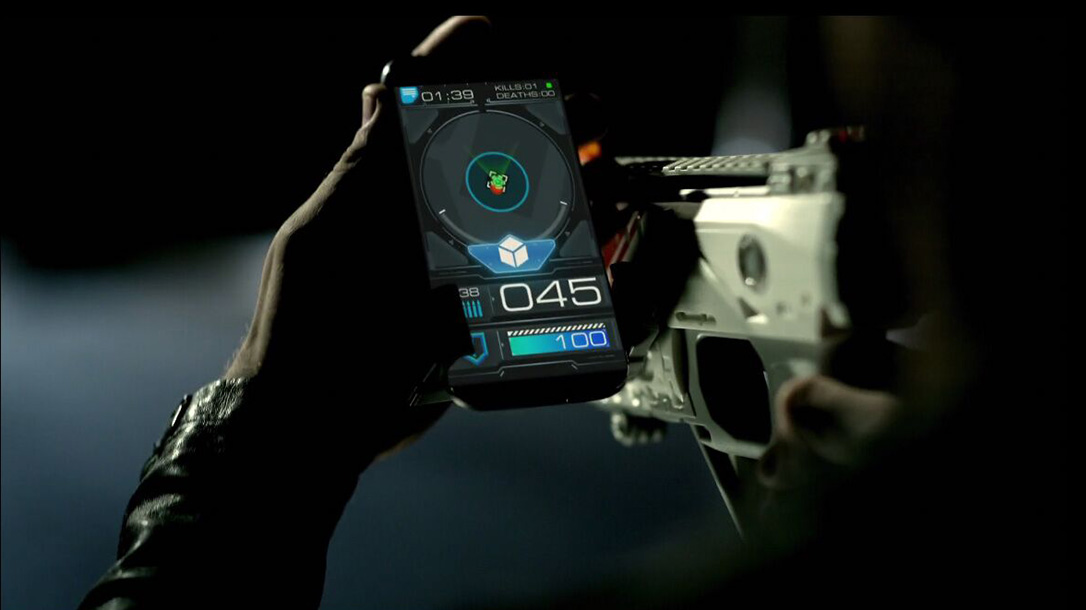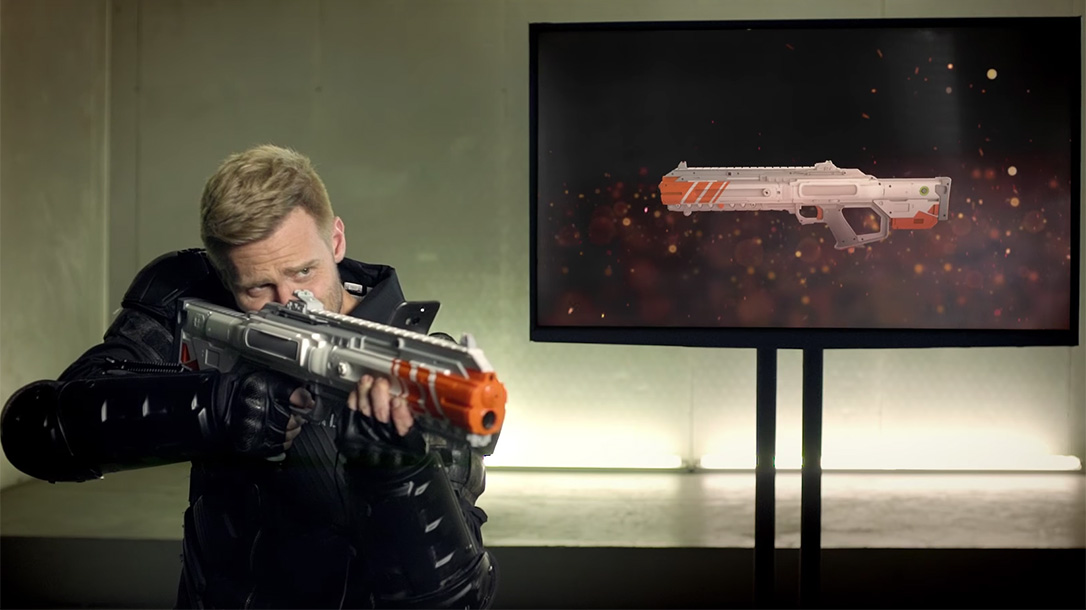More than a decade before the popular video game Wolfenstein 3D was released, chances are, when you thought of a “first-person shooter”-style game, that was laser tag. That futuristic combat simulation was first introduced in 1979 by Milton Bradley, and spawned numerous clones. But one thing remained pretty much the same: Players carried simple “laser guns” and wore vests that would indicate whether they were “hit.” It was actually pretty high-tech for its day.
The game, which built on actual laser-based training systems employed by the U.S. military, wasn’t aimed at thrill-seekers, however. Instead, it was marketed mainly to kids, yet just as often played by slightly older males who had an interest in all things science-fiction—geeks like the characters on The Big Bang Theory.
Advertisement — Continue Reading Below
Somewhere along the way, laser tag also grew beyond something for birthday parties and nerdy bachelor parties and into organized competitions complete with tournaments and national rankings. In other words, it became “too commercialized” for some. At the same time, first-person shooter video games offered the ability to sit back while enjoying the shooting fun.
Recoil Laser Tag
Now drone-maker Skyrocket has updated the classic laser tag game for a new generation of players with Recoil, a Wi-Fi-based game that can turn any neighborhood into a virtual combat arena. It might be just the thing to get today’s couch jockeys to actually put down their controllers and get some fresh air outside for a change.
Recoil could also be seen as a safer alternative to games like paintball and airsoft, which really can’t be played so easily near houses and other “civilians.”
Advertisement — Continue Reading Below
While the goal is still to get the heart pumping from activity, Recoil’s developers at Skyrocket see it as less physically impacting than either of those other “real-world” shooters, too.
“We wanted to develop a game that merged technology with physical play,” explained Craig Mitchell, senior director at Skyrocket. “Recoil revolutionizes the way we play by turning any outdoor space into a digitally enhanced, multiplayer battlefield.”
A Smarter Game
Recoil’s true potential could be in how it also combines elements from popular shooter games; that could be enough to help draw in interest. First, the game’s blasters aren’t much different from the classic laser tag guns. However, the blasters work in conjunction with a user’s Android or iPhone, which connects to a central Wi-Fi router that also determines the actual boundaries of the game.
Advertisement — Continue Reading Below
The basic “starter kit” includes two pistols and the Wi-Fi base station. It also provides support for up to 16 players. Players must have an aforementioned smartphone—sorry, no BlackBerry or Windows Phone support. A dedicated app does the rest.
The basic technology is the same as the old-school laser tag. Players shoot invisible beams of infrared light at one another. However, instead of vests to track hits, Recoil utilizes GPS and inertial sensors in the players’ smartphones. Thus, every player’s position and heading are tracked in real time, as are the infrared data packets from the guns, which are reported to be accurate to 300 feet.
“The weaponry is designed with three sensors on the weapon that operate on high-power infrared transmitters that send packets of information with each trigger pull for the player’s phone to keep track of hits and which weapon was used,” Mitchell said.
Advertisement — Continue Reading Below
Sounds of Warfare
The use of the handsets with headsets also means that players can use voice chat to coordinate attacks or trash talk with the enemy, while the sound of warfare is provided as well to add a level of immersion not available previously. The sound effects include 3D-positional audio to let players know where enemy fire is coming from. But because the games employs headphones, neighbors and those other “civilians” won’t even know a battle is waging around them.
On the topic of sounds and other cues, unlike the beeps and flashing lights that notified players of hits in the old-school laser tag, this new update offers tactile feedback from the blaster. In addition, the handsets can provide information on current scores, objectives and more.
Advertisement — Continue Reading Below
As with video games, Recoil laser tag also offers several different modes of play; those include “skirmish,” “team skirmish” and “search and destroy.”
Each mode presents its own challenges and allows players to mix up the action.
Extra Options for Recoil Laser Tag
The other way that Recoil is similar to video games is that it offers plenty of upgrades—at a cost, of course. While gamers start with two pistols and a base station for around $130, each extra RK-45 Spitfire pistol will add $50. This means the total for 16 players can be north of $800. And that’s without some of the other cool accessories.
Advertisement — Continue Reading Below
Those add-ons include the SR-12 Rogue rifle. The rifles provides a “high fire rate, magazine capacity and damage output,” as well as improved range. At $80, it could be one of those upgrades for more hardcore players and give some extra firepower. However, it probably won’t unbalance the gameplay, at least not too significantly.
There is also the Frag Grenade. Yep, a $15 “explosive addition to your arsenal” that provides a high damage output and a large blast radius. Technically, it isn’t meant to be thrown. Instead, it is more of an IED-style bomb that employs a “time-delay explosion.”
That certainly was something lacking from the original laser tag.
Advertisement — Continue Reading Below
Also, remember that Skyrocket also makes drones. We could see a combination of aerial warfare added to this game in the future.
Damage Control
Given the fact that this is about infrared lasers rather than paintballs or small pellets or BBs, Recoil laser tag should leave little damage to the environment. The blasters are all designed not to resemble actual firearms, either. They are gray, white and orange plastic. Still, as with any game that involves anything even remotely appearing like a gun, it should be used with caution. Playing in a downtown city park probably isn’t recommended, nor is running across a neighbor’s flower garden.
Recoil also has the potential for year-round play, with caution in snow and ice. But one concern would be that in addition to expensive equipment like the guns and Wi-Fi base station, your smartphone is at risk.
Advertisement — Continue Reading Below
No doubt some parents, as well as “older” players, may have to deal with having an expensive experience should the mobile phone be damaged, especially since the guns don’t look like they provide protection to the handsets during what could be a rather extreme experience.
The Future of Laser Tag
Still, this update to laser tag could be an alternative to just another couch-based shooter. It provides intensity that has been lacking in video games. It could be something that morphs into an indoor arena game as well, where corridors and room-to-room combat only increase the thrills. That isn’t exactly what its makers had in mind, but it’s worth noting.
“Recoil can be played in open indoor spaces, but we really want to get gamers outside into fresh air,” Mitchell said. “We believe the game is best played when you have an open outdoor space to play in. Recoil doesn’t necessarily have a sweet spot size-wise, but the gamers have the ability to tailor their play space based on how many are in their group.”
That could be the biggest challenge yet—gamers will actually have to make real-world friends and can’t rely on match-making services or social media to engage with others. But if this can be overcome, it would be nice to see a return to a time when summer—as well as fall, winter and spring—meant running around with your buddies playing “army” and taking down bad guys.
Let’s hope the world isn’t too politically correct for Recoil laser tag.
For more information, visit SkyrocketOn.com.
This article is from the May/June 2018 issue of Tactical Life Magazine. Grab your copy at OutdoorGroupStore.com.


























